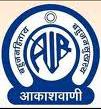 (Source: DRM Consortium Press Release)
(Source: DRM Consortium Press Release)
The DRM Consortium will make its first ever DRM transmissions for Southern Africa in French and English on October 11th on the occasion of the Digital Radio Conference organised by the European Broadcasting Union (EBU) at the headquarters of the European Parliament in Brussels.
The two day conference will include two live studio discussions on the possibilities and future of digital radio from the multimedia radio studio of the European Parliament. The programmes aim to showcase multiplatform and distribution techniques in front of a studio audience of Digital Radio Conference delegates.
The live show in French from 1200-1300 GMT will be followed two hours later (1400-1500 GMT) by a Digital Radio Show in English with international participation including the chairpersons of the DRM and WorldDMB Consortia.
Both the French and English programmes will be carried live on DRM SW 21800 from Ascension Island in the Atlantic Ocean and should be heard in countries like South Africa, Angola, Zambia, Lesotho, Namibia, Zimbabwe, Botswana, Mozambique. The English programme will also be carried at 1800 GMT into Southern Asia on DRM SW 12085, at the end of the daily regular BBC/DW transmission.
Ruxandra Obreja, DRM Chairperson, says: “This is an exciting and imaginative undertaking that will demonstrate practically, even if for a short while, to European MPs and radio enthusiasts at thousands of kilometres apart the capacity of DRM to cover huge areas with excellent audio quality programmes. We are grateful to the EBU for the opportunity to showcase, alongside other platforms, that part of DRM, the only standard for all bands below and above 30 MHz, that could offer so much to the radio lovers in Africa.”
Resources:
 (Source: Radio World Online)
(Source: Radio World Online)


 Broadcast Frequencies
Broadcast Frequencies